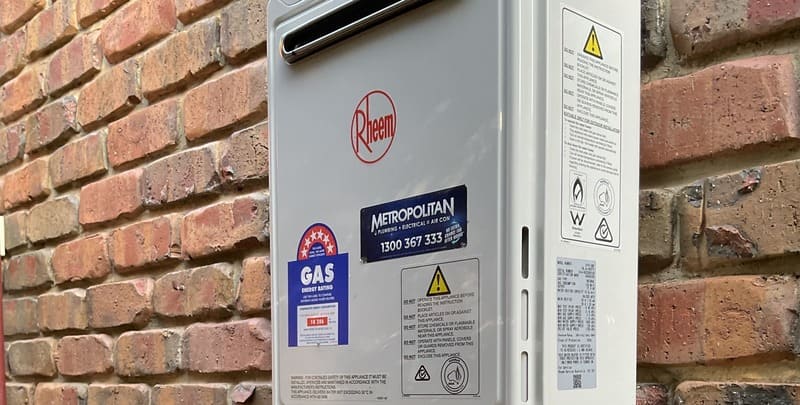Have you ever experienced leaky pipes, noisy plumbing, or frequent appliance malfunctions at home? Often, the culprit behind these issues could be excessively high water pressure. That's where pressure-limiting valves come into play, becoming an essential component for maintaining a healthy home plumbing system. Many homeowners underestimate the damage that high water pressure can do to their plumbing infrastructure, water heaters, and various appliances. Without proper regulation, this excess pressure can lead to expensive repairs and drastically reduce the lifespan of critical home systems. Installing a pressure-limiting valve is a proactive measure that can prevent these problems and safeguard your home investments. Let’s delve deeper into what these valves are and why they matter. A pressure-limiting valve (PLV) is a crucial device designed to protect your home's plumbing system from the damaging effects of high water pressure. It regulates the incoming water pressure, ensuring it stays within a safe range before reaching your pipes, water heater, and other appliances. When water first enters your property, the valve adjusts the maximum static pressure to prevent leaks, pipe bursts, and unnecessary wear on your plumbing. Typically installed near the water meter or main water supply line, the valve is adjustable, allowing plumbers to customize the pressure settings based on your specific needs. Properly installed, a pressure-limiting valve ensures compliance with Australian standards and safeguards your home's vital systems by keeping them free from pressure-induced issues. High water pressure isn't always immediately apparent, but its effects can be detrimental over time. If you notice any of the following, a pressure-limiting valve might be the solution you're looking for: Installing a PLV can help mitigate these problems and save you both money and stress in the long run. We understand how pressure-limiting valves play a critical role in shielding your hot water systems and other household appliances from the harmful impacts of high water pressure. Without proper control, excessive pressure can lead to premature wear and failure of your hot water tank, as well as damage to other appliances such as dishwashers and washing machines. A pressure-limiting valve minimizes the risks of leaks, bursts, and costly repairs while extending the lifespan of your water heater, appliances, and overall plumbing system. This small investment can yield significant savings and convenience over time. Installing a pressure-limiting valve is not a task for amateurs—it requires a licensed plumber. A professional will evaluate your plumbing system and identify the optimal location for the valve, usually near the water meter or main supply line. Correct installation ensures the valve is set to the appropriate pressure range for your home, offering maximum protection against high-pressure issues. A certified plumber will also ensure the installation adheres to Australian standards, giving you peace of mind knowing your plumbing is secure and compliant. Hiring an expert prevents costly errors and keeps your plumbing system running smoothly. Trusting a professional ensures that your home remains protected from the perils of unregulated water pressure. There are several misconceptions surrounding pressure-limiting valves that can mislead homeowners. Understanding the truth can help you make informed decisions about your plumbing needs: Now that you know the facts, you can make smarter choices regarding your home's plumbing. Installing a pressure-limiting valve is a straightforward yet essential step in safeguarding your home from the adverse effects of high water pressure. By controlling the incoming water pressure, these valves protect your plumbing systems and appliances from significant damage. Additionally, meeting Australian standards, they keep your water pressure within a safe range, reducing stress on your pipes and extending the longevity of your fixtures. Reach out to your plumber to install a pressure-limiting valve and enjoy peace of mind knowing your home is protected. Remember, regulations vary by region, so always consult local authorities or professionals before making any changes to your plumbing system. Please note: This information is intended for guidance purposes only. Local regulations may differ, so it's advisable to consult your local authorities or a qualified professional before proceeding with any work. For further details, refer to our Terms & Conditions.
Features:
• Made of USP VI polypropylene.
• External thread Cap: Special screw cap designed without silicone ring to avoid risk of contamination.
2D barcode
Each vial is permanently marked with a unique 2D barcode, ensuring the vials can be easily and accurately identified when being moved, shipped or even accidentally dropped. Laser 2D barcodeon the bottom of each vial allows scanning and decoding at once without removing from rack.
Three-code-in-one (digital code, barcode, QR code)
Warning:
Do not use cryogenic vials for storage in the liquid phase of liquid nitrogen. Only store vials in the vapor phase above the liquefied gas.
Always use appropriate safety equipment when removing vials from cryogenic storage.
Cryogenic Vials,Barcode Matrix Vials,Barcode Cryogenic Tubes,Internal Thread Cryogenic Vials Wuxi NEST Biotechnology Co.,Ltd , https://www.nest-biotech.comWhat Exactly Is a Pressure-Limiting Valve?
Signs You Might Need a Pressure-Limiting Valve

Guarding Your Hot Water System and Appliances
Professional Installation: Why It Matters
Myths About Pressure-Limiting Valves Debunked
Protect Your Plumbing Today



Pressure Limiting Valves and Why You Need One
• Non-pyrogenic, DNase/RNase and human DNA free.
• Round Bottom, Self-standing.
• Autoclavable.
• Sterilized by E-beam, SAL=10^-6 .
• Clear graduations and white marking area.
• Recommend to store in gas phase of the nitrogen tank.
• Internal thread Cap: Special screw cap designed with silicone O-ring to secure the sealing under various condition.
• The materials and quality of NEST 2D barcode cryogenic vials are the same as NEST common cryogenic vials. They can be used with
Biobank system.
• The vial has laser-etched international standard DATAMATRIX 2D code at the bottom.
• The barcode and digital code at the side are anti-fading, anti-deforming, wear-proof and resistant against DMSO and other organic solvents; 100% clear and readable.
Refrigeration:
The lowest temperature can withstand -196°C (with screw cap). All our polypropylene pipes are suitable for low temperature storage,
except for liquid nitrogen.